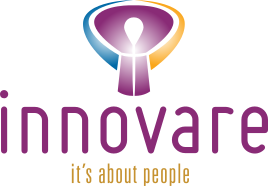Employee performance evaluations are more than just an annual task. They offer an opportunity to shape your organisation’s future and its people. In today’s fast-paced work environment, conducting these evaluations effectively is crucial for business success.
As businesses evolve, the need for thoughtful and productive performance evaluations grows. These evaluations are not just about assessing past performance; they are about creating a clear path forward for both employees and the organisation.
Let’s explore the five key benefits of performance evaluations to your business and how they can drive long-term success.
Discover how performance evaluations can enhance communication and engagement, streamline resource planning, and more.
Benefit #1: Improved Communication
Improving organisational communication is one of the most important benefits of an employee performance evaluation. Regular evaluations allow managers and employees to have honest conversations about performance. This creates a space for discussing strengths, areas for improvement, and specific goals.
Employees who receive clear, constructive feedback understand what is expected of them. This can reduce confusion and ensure alignment with organisational objectives. Clear, constructive feedback allows employees to ask questions, clarify concerns, and seek guidance. This dialogue strengthens relationships and fosters a culture of transparency.
Moreover, performance evaluations allow managers to provide real-time feedback rather than waiting for issues to accumulate. Regular communication ensures that any challenges are addressed early, which can prevent bigger problems later.
In addition, the feedback from these evaluations doesn’t just flow one way. Employees also have the opportunity to share their thoughts on their roles, the work environment, and their career development. This two-way communication can help improve morale and lead to more engaged and motivated teams.
Benefit #2: Building a Career Path
Employee performance evaluations are key in helping individuals build their career paths. Regular feedback helps employees understand their strengths and areas for improvement. This clarity allows them to take the necessary steps to grow within their roles and the organisation.
With a clear career development plan, employees are more motivated to progress. Performance evaluations help set short-term and long-term goals aligned with the company’s objectives. By working towards these goals, employees can develop their skills and competencies.
Key ways evaluations contribute to career growth:
- Clear goals: Employees receive specific targets for which to aim.
- Skill development: Identifying areas for improvement enables focused skill development.
- Promotion opportunities: Regular evaluations highlight readiness for more responsibility or higher roles.
- Job satisfaction: Knowing there is a career path encourages commitment and reduces turnover.
- Mentorship: Feedback discussions often include advice from managers guiding career decisions.
Benefit #3: Checking Levels of Engagement
Employee performance evaluations offer a clear opportunity to assess engagement levels. Regular feedback sessions allow managers to gauge how connected employees feel to their roles and the organisation.
Engaged employees are more likely to contribute positively to the team and company goals. They are motivated and productive and often take on leadership roles. Performance evaluations help managers identify engagement gaps and promptly address issues.
Key signs of engagement during evaluations include:
- Commitment: Employees show interest in their tasks and long-term goals.
- Initiative: Employees go beyond their essential responsibilities.
- Collaboration: A strong willingness to work with others.
- Feedback receptiveness: Engagement is often reflected in how employees receive and act on feedback.
Conversely, disengaged employees may show reduced productivity, lack of motivation, or frequent absenteeism. Performance evaluations help identify these early signs, allowing managers to address the root causes.
Benefit #4: Getting Feedback for Yourself
Employee performance evaluations not only help managers assess their team, but they also provide valuable feedback for the managers themselves. It’s a two-way process that encourages growth and improvement for everyone involved.
When employees share their thoughts during evaluations, it opens a channel for managers to understand how their leadership style is perceived. This feedback is crucial in identifying strengths and areas for improvement as a leader.
Through these evaluations, managers can gain insights on:
- Communication skills: Are your messages clear and compelling?
- Supportiveness: Do your team members feel you provide enough guidance?
- Decision-making: Are your decisions helping or hindering progress?
Managers can adjust their approach and strengthen team relationships by regularly receiving feedback. They show employees that their opinions matter, leading to a more engaged and motivated workforce. This improves team performance and fosters a culture of openness and trust.
Benefit #5: Resource Planning
Employee performance evaluations provide valuable insights into resource planning. By assessing individual performance, managers can make more informed decisions about how to allocate resources effectively.
These evaluations highlight the strengths and weaknesses of each team member. With this information, managers can identify where extra support is needed and where individuals excel. This ensures resources, such as training, tools, or personnel, are distributed efficiently.
For example:
- Skill gaps can be identified, prompting targeted training programs.
- High performers may be given more responsibility or advanced projects.
- Underperforming employees may benefit from additional coaching or reassignment.
Performance evaluations also help in succession planning. By understanding the potential of team members, managers can identify future leaders and plan for their growth within the company.
In addition, these evaluations support strategic resource allocation. Managers can anticipate future needs and ensure the right people are in place at the right time, reducing the risk of understaffing or overburdening key employees.
Conclusion
In conclusion, employee performance evaluations offer far more than just a way to measure individual progress. They are a powerful tool for improving communication, building career paths, gauging engagement levels, receiving feedback, and ensuring effective resource planning.
When implemented correctly, these evaluations can drive both individual and organisational success.
By regularly assessing performance, businesses can create a more aligned, motivated, and productive workforce. This ultimately supports growth and drives better results.
At Innovare, we understand the importance of aligning people management strategies with business goals. Contact us today to explore how we can tailor solutions to your organisation’s HR needs.


